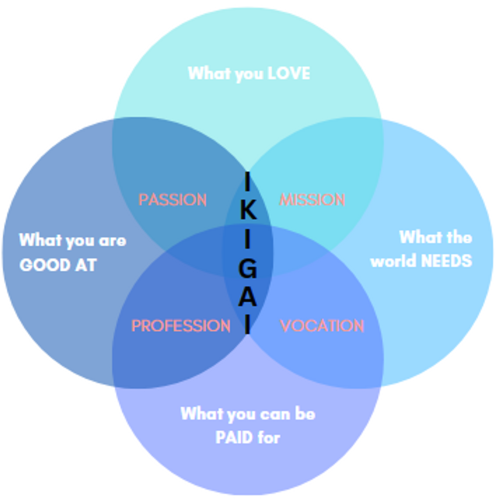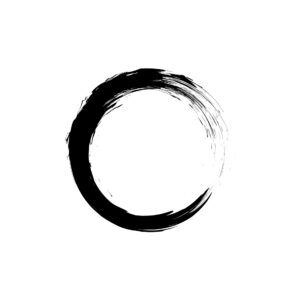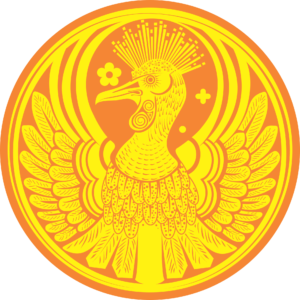15 Powerful Symbols For Resilience You Need To Know
Hey there, my fellow warriors of resilience! Are you feeling a bit battered and bruised by life’s challenges? No reason for worries, for I have just the thing to give you a boost of strength and inspiration: 15 powerful symbols of resilience that you absolutely need to know about. These symbols aren’t your run-of-the-mill motivational quotes or cheesy self-help mantras. No, these are the real deal. They’re steeped in history, culture, and meaning, and they’ve been used for centuries by people just like you who have faced adversity. Head-on and come out the other side stronger than ever. Get on track to discover the symbols that will help you tap into your inner strength and bounce back from whatever life throws your way.
Symbols for resilience: the concept of resilience
Resilience is a powerful force that resides within every individual. It is the ability to adapt and recover from adversity, to bounce back from challenges, and to emerge stronger than ever before. It is the determination to persevere in the face of obstacles, the courage to face difficult situations, and the unwavering belief in oneself.
Resilience is not an innate quality that some are born with and others are not. It is a skill that can be developed and strengthened over time. It is the result of a mindset that values perseverance, optimism, and self-belief, and a willingness to learn from mistakes and setbacks.
Resilience is not the absence of difficulties, but rather the ability to overcome them. It is the capacity to find meaning and purpose in adversity, to grow and learn from experiences, and to use them as a source of strength and inspiration.
Cultural symbols For resilience
The Hamsa Hand

The Hamsa hand is a palm-shaped amulet, originated in the north of Africa. Derived from the hand of Fatima, the daughter of the Prophet Mohammad, it is believed, that the amulet wards off evil. The five fingers represent all five sons of Fatima and Mohammad.
The Enso Circle
“Enso (formally spelled ensō) is a sacred symbol in Zen Buddhism meaning circle, or sometimes, circle of togetherness. It is traditionally drawn using only one brushstroke as a meditative practice in letting go of the mind and allowing the body to create, as the singular brushstroke allows for no modifications. While at first glance, the enso symbol appears no more than a misshapen circle, it symbolizes many things: the beauty in imperfection, the art of letting go of expectations, the circle of life, and connection. The enso is a manifestation of the artist at the moment of creation and the acceptance of our innermost self. It symbolizes strength, elegance, and one-mindedness.”
This explanation from Barbara Bash about the Enso Circle hit’s the nail on the head. A huge junk of being resilient is putting ourselves in a place where we don’t need resilience at all. With the Enso Symbol we may recognize that the very moment right now is the best we can get, because there is no alternative. We cannot live two experiences at the same time. Defining the flawed moment we live as imperfect perfect, allows us becoming more and more resilient.
The Maori Koru
The Maori Koru is inspired by a juvenile silver fern plant. The process of unfurling its leaves, influenced many New Zealandians. The symbol has a deep meaning in the Maori Culture.
It embodies life’s eternal change, strength, latent and potential energy or enlightenment. You can use the Koru as a reminder, that the resilience inside you is just waiting to be discovered and unleashed. Get inspired by watching a timelapse video of a growing silver fern. It’s an awe-inspiring natural process, that may let you think about life from a different angle.
The Phoenix
In a blazing fire, the Phoenix takes his last journey finishing his circle of life. What stays is his ash and a moment of silence. In Greek mythology the Phoenix ends his lifecycle in flames until a new Phoenix rises out of the ashes of his predecessor. It reminds us, that with great hardship comes new energy and therefore great resilience, since the wisdom of his predecessor is not lost, but transmitted to the next generation.
For that, the Phoenix is a powerful symbol for resilience.
The Double-Headed Eagle
The double-headed eagle is a symbol of resilience in many cultures. It represents the ability to see and understand both sides of a situation. The roots of the eagle go back to 3800 BC in the mighty Sumerian city of Lagash, which was the symbol of the god of Lagash. Understanding both sides of a situation can provide tremendous growth in your understanding of resilience.
The importance of having words to represent resilience
Let’s be honest. Life consists of suffering and pain. An easy life is not created by easy experiences. Believe it or not, but an easy life is built by overcoming adversity and challenges and the best co-pilot to do so is resilience. Every time you solve an issue, every time you forgive, every time you are forced to go on your knees and get back up, you build a strong layer of resilience around your skin. That layer makes you bounce through life as if you were a phoenix, rising from the ashes of your challenges and emerging stronger, wiser and more resilient than ever before. Symbolic words for resilience can act like a mental anchor, so that you’ll never forget your true nature.
Symbolic Words For resilience
Indomitable
Being indomitable is a powerful term, which is the result of resilience. It ranges back to the 1600’s, where it derived from the Latin words “in” and “domitare”, which means “unable to be tamed”. Nowadays we use it for somebody who is incapable of being conquered, subdued or overcome.
Fortitude
Fortitude derived from the 10th century Latin word “fortis”, which is translated to strong, capable of endurance or strong. Resilience can be compared to a fortress, where through continuous work on the walls of your resilience, you will create a massive shield against destructive forces. Be aware, that little cracks can shatter your resilience, so take care on which fundament you build your fortress.
Unwavering
”Her commitment to fight for equality and fairness was unwavering.” An unwavering personality has the reputation of undoubted commitment and credibility. I’d say this is how resilience looks from the outside. If you have faced much adversity in your life, people will not doubt your capabilities anymore.
Stoicism
Stoicism is an ancient Greek philosophy, which came up in the 3rd century. Probably one of my favorite concepts of all time, stoicism stands for a radical acceptance of events in our lives over which we have no control. Through virtuous ethics and tranquility, stoicism gradually shifts one’s focus to those things we have control over, which are our thoughts. Implementing a stoic lifestyle can open you many doors, from which resilience is just one of them.
Tenacity
This may not be a 100% fit, but the definition for minerals sounds compelling to me: with tenacity you measure the resistance of a mineral to breaking or deformation. Sounds familiar, doesn’t it?
Symbols For resilience: Cultural words of resilience
Ubuntu
Ubuntu represents an ancient African concept about how to treat fellow human beings. Translated it stands for “the belief in a universal bond of sharing that connects all humanity”. We are all connected through our pain, experiences and ancestors. It makes life much easier to recognize, that life is a shared experience and there is no need to pretend we are not the same. Nobody is special, nobody truly superior and all of us sleep on the same soil. Creating resilience on that fundament, provides strong pillars to build your life on.
Ikigai
- What do you love to do?
- What are you good at?
- What can you be paid for?
- What does the world actually need?
These are the cornerstones of IKIGAI, which means literally translated “life purpose”. The roots can be found in the 14th century in the Japanese culture. Ikigai promises a long and fulfilled life, if you have answered these fundamental questions and manifested the results in your life. Combine them and you have found your Ikigai.
Somebody who lives for something, lives longer. The stronger this something is, the more likely it is, that you keep going until you see your mission as finished.

Nunchi
The Korean concept “Nunchi” describes the ability to perceive and evaluate people’s emotions by carefully listening to them. With Nunchi you build social sensitivity, which helps you to communicate effectively. A common issue where Nunchi is useful, are conflicts that derive through misunderstanding.
When person A feels offended, Nunchi can help to recognize that most conflicts are not caused by person B, but because the person A has internal conflicts to solve, which got triggered by person B. This helps tremendously not taking things personally and build lasting resilience within human interactions.
Pura Vida
If you have ever been to Costa Rica, you may have heard about the term “Pura Vida”. It literally means “simple life” and stands for the lifestyle “Ticos”, Costa Rican citizen live. It means putting the focus on the most fundamental things in life and stay optimistic.
In terms of resilience, we can adapt this lifestyle to regain focus on the truly important aspects of life. Pura Vida acts like a lighthouse if we got lost in the stormy sea of societies dopamine addictions. With that we release the conflicts that create everyday stress, which impacts our ability of resilience positively.
Wabi Sabi
Wabi Sabi is a traditional Japanese philosophy advocating for the acceptance of temporary change and imperfection. It embodies the appreciation of natural imperfection. Everything around us can aesthetically look flawed, behave superior, or change from time to time.
Wabi Sabi provides a symbolic anchor for our ever-growing need of perfection. It may take you back to reality that no matter what you see, or create: Everything is naturally flawed, impermanent and still, it’s worth being appreciated and accepted.
What's next?
There is not always the need to tattoo things on your skin. You can sprinkle your anchors through your daily life, wherever you want. Put them on your fridge, mirror, name folders on your computer after them, write them in your notebook or use them as a screensaver.
We also heavily underestimate the vocabulary we use in our life. It has a tremendous influence how we think and behave. Most words we use range back to our childhood and have a deep connection with our memories. They evoke emotions, just by thinking about them. The language of those out of luck consists of unlucky vocabulary, which influences them negatively. Integrate the powerful words and the symbols for resilience in this post to your daily vocabulary and witness a change in the course of your life.




